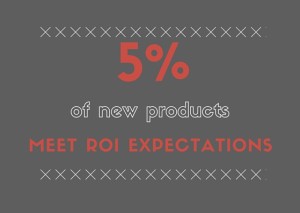
How to Transition from Custom Engineering to Standard Products
Going from custom engineering to developing standard products is scary and requires changes to the way the company does business. If this is the first time your organization considers developing a standard product to be sold to multiple as yet unknown customers, product design is likely getting the lion’s share of attention. Here are some tips to increase your chances of financial success by looking at the process from a company wide perspective.
Be clear on your goals
Ask yourself what you expect from new product development. Capturing value delivered by someone else? Simplifying multiple custom versions of the same product? Gaining a proprietary position for a product category? Expending into a new market? The answers will help you prioritize your ideas.
Choose your idea carefully
Before you start, formally inventory your new product ideas and keep adding to the list. It will allow you to pick the best available idea, not just the last one heard and to have back up ideas if the first one does not withstand scrutiny.
Leverage your strengths
What are your company’s strengths? You will be more successful if you use them. If you are really good at making plastic gizmos for market A, don’t start with metal widgets for market B. Is your technical expertise in electronic devices? Don’t make your first product development a mechanical device.
Define your target market upfront
What is your market? Talk to your potential customers before you start developing. Don’t limit yourself to your best existing customer. But if their response is lukewarm, you should probably stop right there and work on something else. Lack of market research upfront is the most common cause of failed new product introduction.
Also, don’t assume that because you develop a product for one customer, you will be able to sell it “as is” in the general market. At best, you will have to remove customer idiosyncrasies from the design. This constitutes a second product development and should be treated as such.
Calculate your expected Return on Investment (ROI)
How much money will you make? Do at least a “back of the envelop” calculation. How much will it cost to develop? Include labor and overhead costs, not just out of pocket costs. Then multiply by at least 2. If it is the first time and you have not been tracking how long it takes to develop a design, multiply by 4.

Now for the revenue estimate: how much would it be worth to a customer and how many customers are likely to buy? Should you really estimate 30% market penetration when your current market share is 0.00001%? What is your typical profit margin? If you get it, does the investment make sense? Note: resist the temptation to increase market penetration or profit margin to make a good story. They probably will not materialize.
Are production adjustments needed?
How do you plan on producing your new product? Will the same facility that produced your custom engineered products be able to efficiently produce your new products in the quantities you can reasonably expect? If the answer is no, what are your options? Outsourcing? Selling at a lower margin until you have enough volume to justify efficient production equipment? Be sure to incorporate these assumptions in your cost estimates.
How will you sell your new product?
Custom engineered products are usually sold through direct sales to a handful of large companies and with very limited Marketing. This “small number/large tickets” approach could limit the sale of your new product. Consider the internal cost of revamping your Marketing (website, digital promotion) and of setting up more appropriate Sales channels (e-commerce, distribution, inside sales…). Be sure to include them in your assessment of costs. In truth, if you intend to continue with more standard products, it is unfair to make the first one bear all the costs of this transformation. You should however consider what will be needed to profit from your new product before starting development.
Give it your best…but not your best engineer
Resist the temptation to give your best applications engineer dual responsibility for applications support and new product development. Daily demands will always make him gravitate back towards applications support. Development will be delayed, costs will escalate and frustration will ensue all around. A minimalist structure that seems to work better is to have a less experienced engineer dedicated to the new product under the leadership of the more experienced applications engineer.
Learn and Repeat
Document, document, document! This will allow you to learn how much it costs and how long it takes to research/develop/pilot/market your future new products, increasing the chances that your next products will be even more profitable.
Start a Conversation
